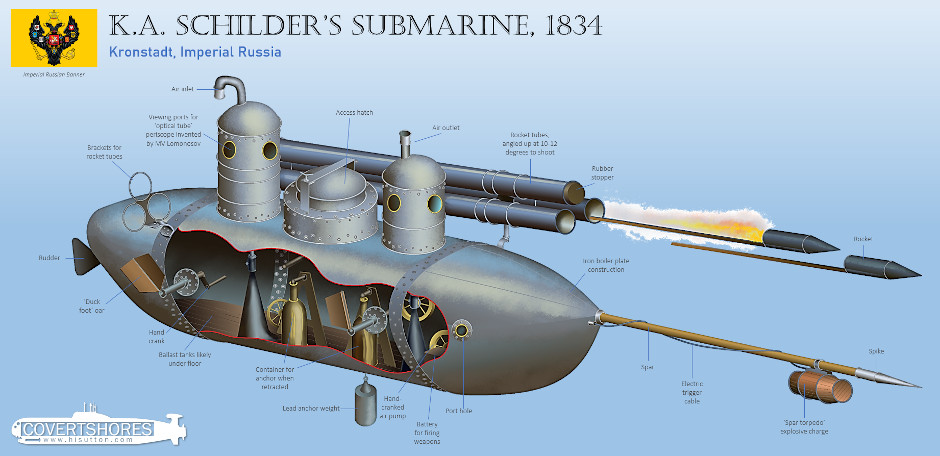World's First Rocket Armed Submarine, From 1834
Original Artwork. CLICK to enlarge.
World’s First Rocket Armed Submarine, From 1834
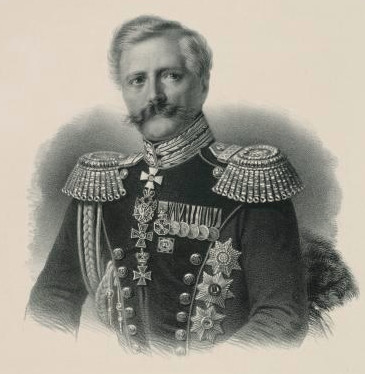
 Naval warfare was changed in the 1960s when the US Navy started deploying large rockets on submarines. History buffs may point out that actually Russia, then USSR, beat them by several years. The first Russian ballistic missile submarines were sailing in the late 1950s. But Russia beat them by much more than a few years. The first rocket-armed Russian submarine was in the 1830s.
Naval warfare was changed in the 1960s when the US Navy started deploying large rockets on submarines. History buffs may point out that actually Russia, then USSR, beat them by several years. The first Russian ballistic missile submarines were sailing in the late 1950s. But Russia beat them by much more than a few years. The first rocket-armed Russian submarine was in the 1830s.
And it had submerged launch, something that took a while when they tried it in the Cold War.
Russian inventor Adjutant General K.A. Schilder (1785 - 1854), was an expert in many aspects of military engineering. A combat veteran, he was expert in rockets, mines, bridges, tunneling and fortifications. But he was also a notable submarine pioneer who is perhaps much less well known than he should be.
Karl Andreevich (KA) Schilder built his first submarine in 1834. The vessel was built at the Aleksandrovsky foundry in St. Petersburg, which is famous today as Proletarsky Zavod. It displaced (maybe weighed) 16 tons and could dive to a depth of around 12 meters (39 ft).
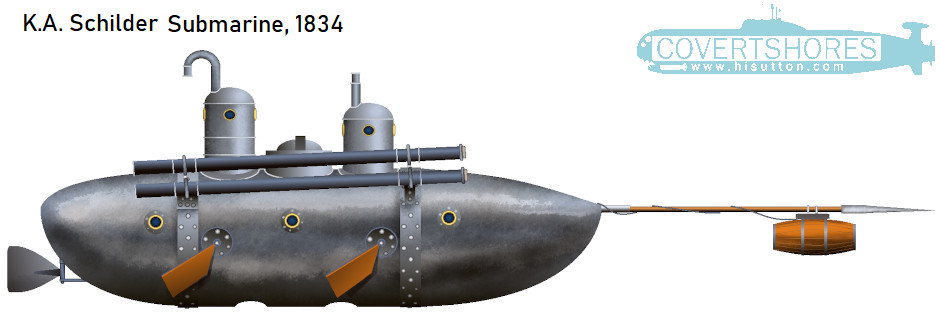
And, as I have alluded to, it was heavily armed. It had two sets of three rocket tubes either side of the hull. These were angled upwards about 10-12 degrees and could be fired either while on the surface or submerged. There were tested so, while they may not have been very accurate, they were a real capability.
There was also a spar torpedo. In many respects this was the precursor of the much more famous Civil War submarine H.L. Hunley. Or the David Class semi-submersible torpedo rams.
Get The essential guide to World Submarines
This Covert Shores Recognition Guide Covers over 80 classes of submarines including all types currently in service with World Navies.
Check it out on Amazon
Navigation was via an ‘optical tube’ carried in two towers. This was some form of early periscope. Other advanced features included air intakes and outlets with some form of pump system to refresh the air. The pump was designed by A.A. Sablukova and had to be turned by hand. Ballast was controlled via two water tanks.
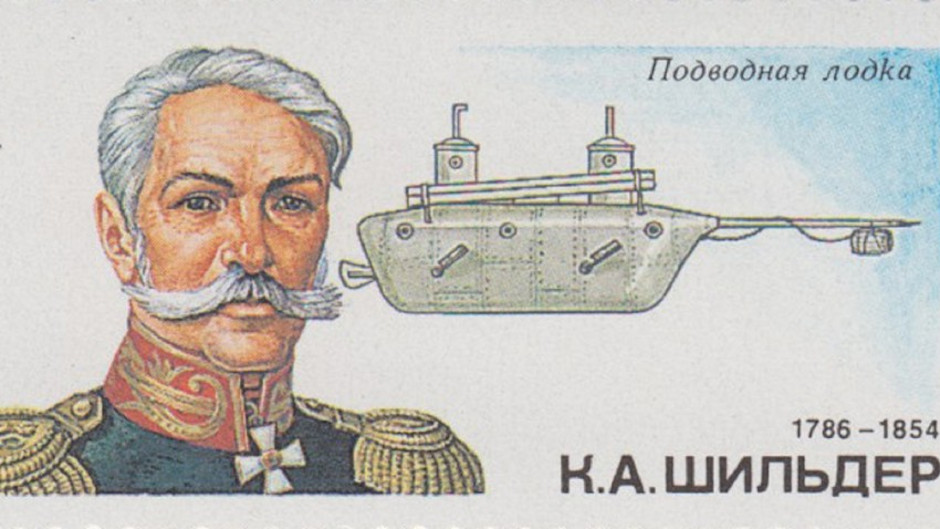
THE book on Special Forces subs Covert Shores 2nd Edition. A world history of naval Special Forces, their missions and their specialist vehicles. SEALs, SBS, COMSUBIN, Sh-13, Spetsnaz, Kampfschwimmers, Commando Hubert, 4RR and many more.
Check it out on Amazon
The 8-person submarine could sit stationary under the water for several hours using two lead anchors. These were operated from inside the submarine.
The big weakness was mobility. This is before the days of efficient power sources for submarines, so propulsion was human. Four hand-cranked ‘duck foot’ oars gave it a top speed of just 0.3 knots. That is a lot slower than a swimmer. Or the currents in many rivers or seas. Additionally the optical tubes only worked while the submarine was semi-submerged. And they were yhe only means of navigation so it was effectively blind when fully submerged.
This mean that it was too slow to close on a target in normal conditions and would probably miss it anyway since it would be running blind.
Schilder built a follow-up boat in 1838. This was smaller and had some improvements, but ultimately had the same problem. Then he built a third which used some form of ‘water jet’ propulsion. This fared no better. Sadly the submarines were eventually sold for scrap.
War Tug Concept
With mobility being human-powered submarine’s biggest weakness, Schilder proposed a towed barge to transport them into action. This too was a precursor to much more modern developments.
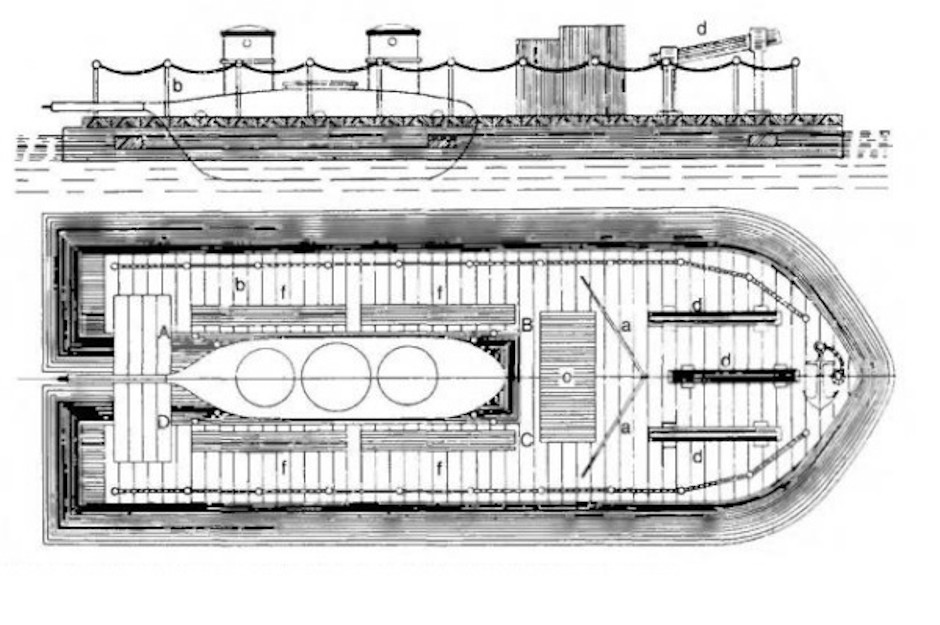
Further reading: https://school10-mgn.ru/en/izobreteniya-karla-shildera-shilder-karl-andreevich—belorusskie.html and https://en.topwar.ru/932-podvodnaya-lodka-k-a-shildera.html
Related articles (Full index of popular Covert Shores articles)

 David ClassAmerican Civil War semi-submersible torpedo boat. w/Cutaway
David ClassAmerican Civil War semi-submersible torpedo boat. w/Cutaway

 1913 Patent for a Submarine w/Cutaway
1913 Patent for a Submarine w/Cutaway

 World war One Type UC-1 U-boat w/Cutaway
World war One Type UC-1 U-boat w/Cutaway

 Japanese Maru Yu special transport submarine of WW2 w/Cutaway
Japanese Maru Yu special transport submarine of WW2 w/Cutaway


